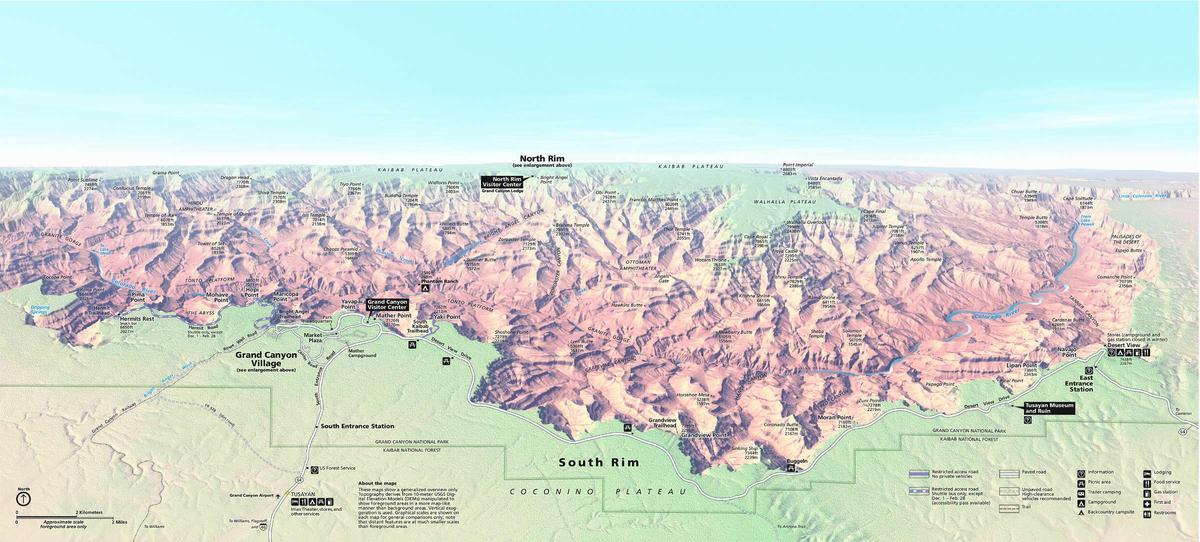Grand Canyon NP--Shoshone Point
Grand Canyon NP--Shoshone Point
Grand Canyon, Arizona 86023
Official WebsiteGrand Canyon National Park website
Grand Canyon National Park maps
Tips for Birding
In-depth information is found on the Grand Canyon National Park website.
About this Location
Two miles southeast of Yaki Point, Shoshone Point also has a road leading to it, and basic facilities including picnic tables and fire grills, but the use of these requires advance permission from the NPS; in summer the place is quite often used for private functions like weddings and parties.
The one-mile road is unpaved and normally closed to vehicular access by a locked gate, though visitation on foot is allowed without a permit. The point is not signposted from the East Rim Drive but next to the gate is a parking area, on the north side between mileposts 244 and 245; from here, the rim is reached by a pleasant, level, 20-minute walk through open ponderosa pine woodland.
At the road’s end, the cliffs form a narrow promontory, jutting out from the plateau, and affording views of more than 180° of the Grand Canyon – a vista usually appreciated without any other visitors. To the west, the edge of the rim is formed by Yaki Point, with Cremation Creek below and Phantom Creek (on the North Rim) in the distance. In the foreground are Newton and Lyell buttes, two narrowish peaks in the Supai sandstone, then beyond, also on the North Rim, the long drainage of Clear Creek runs between more high buttes including Zoroaster Temple and Thor Temple. The eastern aspect is dominated by several forks of Grapevine Creek, with other red, flat-topped buttes beyond. The Colorado River is in view only in the far northeast near Tanner Canyon, where it curves round northwards towards Marble Canyon.
About Grand Canyon National Park
See all hotspots at Grand Canyon National Park
Grand Canyon is considered one of the finest examples of arid-land erosion in the world. Incised by the Colorado River, the canyon is immense, averaging 4,000 feet deep for its entire 277 miles. It is 6,000 feet deep at its deepest point and 18 miles at its widest. However, the significance of Grand Canyon is not limited to its geology.
The Park contains several major ecosystems. Its great biological diversity can be attributed to the presence of five of the seven life zones and three of the four desert types in North America.
The five life zones represented are the Lower Sonoran, Upper Sonoran, Transition, Canadian, and Hudsonian. This is equivalent to traveling from Mexico to Canada.
The Park also serves as an ecological refuge, with relatively undisturbed remnants of dwindling ecosystems (such as boreal forest and desert riparian communities). It is home to numerous rare, endemic (found only at Grand Canyon), and specially protected (threatened or endangered) plant and animal species.
Over 1,500 plant, 355 bird, 89 mammalian, 47 reptile, 9 amphibian, and 17 fish species are found in the park.
Content from Official Website and Grand Canyon National Park website
 Grand Canyon Panorama Map
Grand Canyon Panorama Map